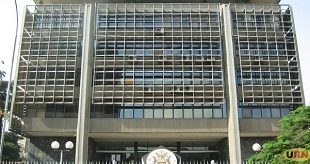
Kampala, Uganda | THE INDEPENDENT | Uganda’s total debt stock grew to 67.4 trillion Shillings by the end of the financial year 2020/21 in June, according to the Bank of Uganda.
This shows a debt to GDP ratio of 45.5 percent, in contrast to earlier estimates of almost 50 percent, which had been stated by the Ministry of Finance, Planning and Economic Development. During the year, the economy grew to 148 trillion Shillings from 139.7 trillion Shillings the previous year.
“As the government continues to support economic recovery through provision of the economic stimulus packages to various sectors, debt is projected to increase further over the near term amounting to 49.9 percent of GDP by the end of June 2021,” said the ministry in its Budget Framework Paper for 2021/2022.
Now, the Bank of Uganda in its annual report 2021, says the provisional total public debt stock, in nominal value (the monetary value of the economy without adjusting for inflation) increased by 17.3 percent to 67.4 trillion Shillings as of June 2021.
Over the year, the stock of domestic debt grew by 35.2 percent, while external debt went up by 9.0 percent due to increased borrowing from multilateral and bilateral creditors. External debt accounts for two-thirds of the total debt stock. At 45.5 percent of GDP, BoU says that Uganda’s debt remains sustainable, with a low risk of default in the medium to long term, but warns about the effect of low revenue collections and limited exports.
URA has already made a revenue collection deficit of 499.49 billion Shillings below the target total collection 0f 4.9 trillion Shillings for the quarter that ended September 30, 2021. The tax body was given a target for the year 22.3 trillion Shillings. However, worry for BoU is that as debt rises, there is more pressure on the local revenue collections to service the debt.
“There are some vulnerabilities arising from weak exports and low tax revenues reflecting subdued economic activity. Indeed, the ratio of debt service to domestic revenue has steadily increased over the last decade, rising to 25.6 percent in June 2021 from 12.7 percent in June 2010,” says BoU. This reflects higher debt service costs that may be at the expense of priority sectors of the economy.
According to the ministry, Uganda’s economy is expected to rebound to up to 4.2 percent in 2021/22 and then to 6 percent the year later. Experts say Uganda’s stable growth in economic activity will depend on how the COVID-19 pandemic is handled and how strict government containment measures will be going forward.
Ronald Muyanja, the Trading, Global Markets Head at Stanbic Bank says the private sector was able to build on the return to growth seen during August at the end of September, registering a second consecutive gain in output and new orders.
“New orders increased for the second consecutive month amid a loosening of lockdown restrictions feeding through to higher customer numbers and improving demand. In turn, business activity also expanded in September after having returned to growth in August,” says Muyanja.
The Bank of Uganda expects policies being put in place to boost growth, in addition to any financial stimulus packages, while in the medium-term, the Standard Operating Procedures (SOPs) and other restrictive measures that remain in place will continue to weigh down on economic activity.
“The outlook is, highly uncertain and is highly conditional on the availability of vaccines, the potential emergence of vaccine-resistant virus strains and a balance between containment measures and economic recovery,” says BoU.
There are also risks associated with the global economy, which will have an impact on Uganda. It is hoped that the projected strengthening of the global economic growth will boost external demand for Uganda’s exports. The worry is the emerging markets and developing economies, which are recovering too slowly, as well as the rising prices of imports like petroleum.
“The current pickup in international commodity prices and surge in global inflation, if sustained, is expected to increase imported inflation. Higher crude oil prices could also increase domestic pump prices posing an upside risk to domestic inflation,” says BoU.
However for Uganda, this could have an advantage too, especially on the oil and gas industry.
The projected pick up in crude oil prices may speed up Foreign Direct Investment inflows towards the oil sector, thereby supporting the exchange rate and bringing closer the date of Uganda’s first oil export.
*****
URN
 The Independent Uganda: You get the Truth we Pay the Price
The Independent Uganda: You get the Truth we Pay the Price


